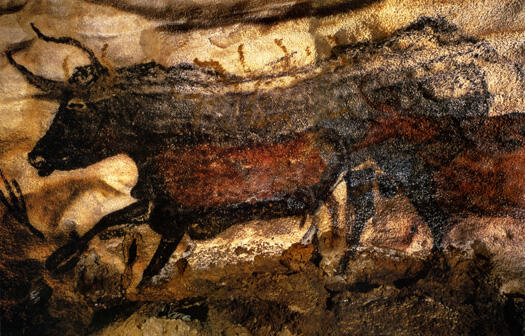
The Paleolithic cave paintings in Lascaux, France are estimated to be approximately 20,000 years old. The cave contains more than 2,000 figures of various animals, symbols, and humans. The paintings were created with the use of mineral pigments and stone etchings. The paintings are present in various sections of the cave and often depict large animals in motion or overlapped with each other. One of the more famous figures is the “Great Black Bull” that is located in the so-called “Great Hall of Bulls” (Fig. 1).
The image depicts a large black bull running to the left side of the painting. It is possible that other animals were overlaid on it, but only the bull image is clearly visible. The images likely depicted animals that the hunters were either hoping to catch or had caught previously. The bull is one of the larger images, and its appearance could suggest that it is an especially dangerous animal. Various researchers interpret the meaning of the paintings differently.
Some believe that they held a spiritual function, perhaps as a way to ensure a successful hunt. Others see an instructional purpose, where the abstract symbols may represent which animals are the most dangerous and how they interact with each other. The hunting culture of the Paleolithic people suggests that these images were of great importance to their creators (“The cave art paintings,” 2017). The exact meaning is not clear, however, and with the deteriorating condition of the cave, the research may never find a satisfactory answer. Nevertheless, the Lascaux cave paintings are highly impressive in their detail, composition, and the way that they were created.
References
Aujoulat, N. (2003). Great black bull.
The cave art paintings of the Lascaux cave. (2017). Web.